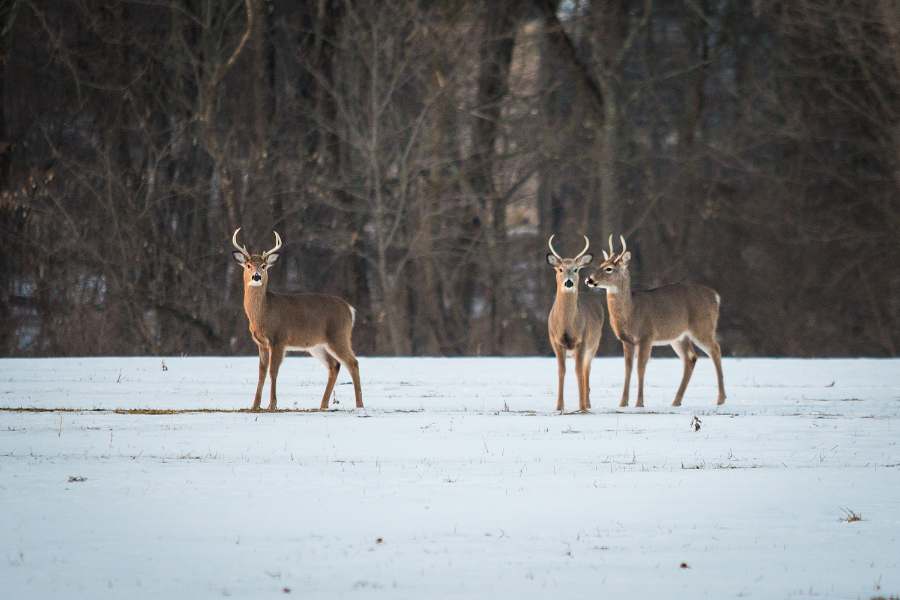Understanding bachelor groups of bucks is crucial in anticipating their movements post-dispersion.
These groups exhibit complex social dynamics, with a clear dominance hierarchy shaping their interactions.
The strongest, most mature bucks typically assert dominance, influencing the home range of the group and their patterns of movement.
Environmental factors, including food sources and potential threats, also play a pivotal role in their dispersion.
As autumn arrives, you’ll notice the bachelor groups dissolving, each buck setting off to establish his territory.
Communication methods, such as scent marking and vocalizations, become more prominent as bucks signal their dominance and readiness to mate during this period.
Contents (Jump to Topic)
ToggleDive into the fascinating world of buck dispersal, and let’s explore together.
Understanding Bachelor Groups of Bucks
Understanding bachelor groups of bucks is crucial in anticipating their movements post-dispersion.
These groups exhibit complex social dynamics, with a clear dominance hierarchy shaping their interactions.
The strongest, most mature bucks typically assert dominance, influencing the home range of the group and their patterns of movement.
Environmental factors, including food sources and potential threats, also play a pivotal role in their dispersion.
As autumn arrives, you’ll notice the bachelor groups dissolving, each buck setting off to establish his territory.
Communication methods, such as scent marking and vocalizations, become more prominent as bucks signal their dominance and readiness to mate during this period.
Factors Influencing Group Scattering
So, what causes these bachelor groups of bucks to scatter?
Multiple factors come into play, starting with habitat preferences. As a buck’s velvet is shed, his preference for cover and bedding areas changes, leading to group dispersal.
Next, consider food availability. Bucks search for new food sources once their summer feeding pattern ends, driving them apart.
Water sources also influence scattering as bucks move to ensure access to water.
Typical Movements of Bucks Post-Scattering
After the dispersal of bachelor groups, you’ll find bucks venturing off into various directions, mainly driven by their need for food, water, and safety from predators and hunters.
Their home range expands significantly post-scattering, with travel patterns becoming less predictable.
The social interactions that previously dictated their movements diminish, and survival instincts take over.
Food sources determine their new routes as they search for areas of nourishment.
As rut behavior kicks in, their movements become even more erratic and driven by the urge to find a mate.
Hunting Strategies Following Scattering
Based on your understanding of post-scattering buck movements, it’s time to tailor your hunting strategies accordingly.
Make use of camouflage techniques to blend into your surroundings and remain undetected.
Strategically select ambush spots based on buck movement patterns. Calls and decoys can lure bucks into range, but their effectiveness hinges on precise timing and placement.
Hone your tracking methods to follow bucks as they roam from their bachelor group locations to new territories.
Hunting in transition areas is key, as bucks often travel post-scattering.
It’s a scientific approach to hunting, requiring careful observation, analysis, and adaptation.
Case Studies: Tracking Scattered Bucks
In your pursuit of understanding buck behavior, let’s delve into some case studies that track the movements of scattered bucks over time.
Utilizing tracking technology, researchers have observed significant behavioral changes in bucks once bachelor groups disband.
They noted that food sources heavily influence the new paths bucks take, with optimal feeding grounds attracting more deer.
Bedding areas are also a top priority, with bucks preferring secluded, well-protected spots.
Furthermore, hunting pressure alters their movement patterns, making them more nocturnal and elusive.
These findings are vital for hunters, providing a roadmap to predict buck movements post-scattering.
Before you go…
In conclusion, understanding where bucks go when bachelor groups scatter isn’t just fascinating; it’s strategic.
If you understand these bucks’ social dynamics, seasonal changes, and typical movements post-scattering, you’re not just hunting.
You’re playing a calculated game.
Here’s to a more informed, strategic, and successful hunt!






